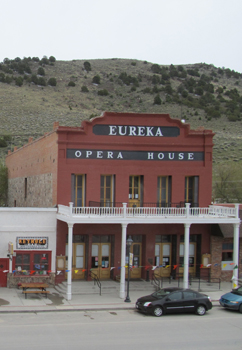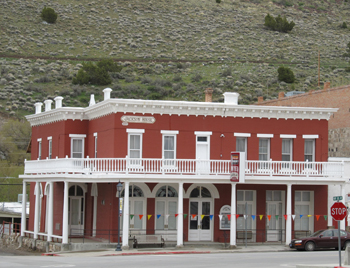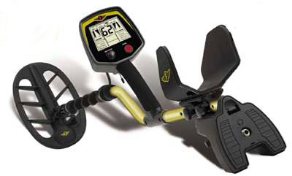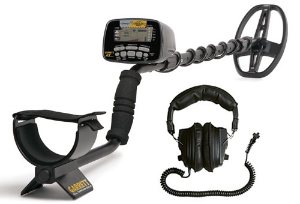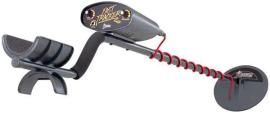Tuesday, December 01 2015
With the weather turning colder, you might think you're done prospecting 'til next summer, but you don't have to be! Even if you're not a regular snowbird heading to a warmer climate for the next few months, Gold mining in the desert is especially enjoyable if you're not into crowds— the desert can be delightfully smog free and people free in the winter. Experts say there is just as much gold waiting to be taken out of the desert as there is commonly found in streams and rivers. Why? Well, throughout history the desert mines just never got the publicity that wet places like California's Mother Lode did, so fewer prospectors went there. Plus, back in the day, mining used to be harder in dry conditions. Luckily that's no longer true if you have the right equipment.
• Metal detecting is another great way to hunt for gold in the desert. Gold detectors are not necessarily higher in cost, but they are built with a higher sensitivity to detecting gold nuggets, and have better ground balancing and • A bonus of prospecting in the desert is the abundance of interesting rocks. You can find many unusual rocks and semi-precious gems such as tourmaline, turquoise, agate, jasper, and more. Lapidary shops can cut and polish the rocks for you, or buy your own rock tumbler and lapidary tools and learn a new hobby. This winter, consider extending your gold-getting season with a prospecting trip to a sunnier, warmer state. Good luck and have fun! Wednesday, October 28 2015
By now you’ve probably heard that climatologists are predicting that the winter of 2015-2016 will be unusual because of “El Niño.” An El Niño weather pattern is a periodic warming of the central and eastern equatorial Pacific "There's no longer a possibility that El Niño wimps out at this point. It's too big to fail," Bill Patzert, a climatologist for NASA's Jet Propulsion Laboratory, told the LA Times. "And the winter over North America is definitely not going to be normal." Most farmers and ranchers in the West are hopeful that these predictions are correct, especially those in California and other states that have been plagued by years of drought. Gold miners are generally hopeful because lots or rain and flooding moves gold around and re-deposits it. While terrible property damage can occur, depending on the severity of the storms, flooding can cause the renewal and reformation of pay streaks and refill crevices with gold. If flooding does move around some gold over the winter, there will be great opportunities in many Western gold-bearing areas come next spring and summer! The consensus of many experts is that El Niño will persist through winter 2015-2016, before weakening, as most of these weather patterns typically do, in spring 2016. Mike Halpert, the deputy director of the Climate Prediction Center, said this El Niño is the second strongest he's seen at this time of the year. "The atmospheric response to the equatorial sea-surface temperature anomalies, measured by their atmospheric ENSO index (AEI), is the strongest event since at least 1948," said Dr. Todd Crawford, chief meteorologist at WSI, the professional division of The Weather Company. According to NOAA (National Oceanic and Atmospheric Administration is a federal agency focused on the condition of the oceans and the atmosphere), the winter of 1997 was the second warmest and seventh wettest on record. Severe weather included flooding in the southeast and California, an ice storm in the northeast, and tornadoes in Florida. During that winter, Oklahoma had some its warmest temperatures and wettest weather. Of course California miners didn’t advocate for the destruction caused by the floods, but they were pretty happy with the resulting redistribution of gold in rivers and areas that previously had been “played out.” Mother Nature has a way of replenishing gold! Looking at past moderate-strong El Niño, here are the predictions for temperatures and precipitation from late fall 2015 through spring 2016 across the country: Wetter: Southern U.S. from California to the Carolinas then up parts of the East Coast Drier: Parts of the Ohio Valley, Great Lakes, Northwest and Northern Rockies Cooler: Desert Southwest, Southern Plains, northern Gulf Coast Warmer: Northern tier of states from the Pacific Northwest to the Northern Plains, Great Lakes, and Northeast The scientific evidence for El Niño seems strong right now, but it’s still a little bit early to say for sure about the strength of the upcoming storm patterns. Still, if you’re planning your prospecting trips and activities for the next six months, you might want to consider the potential golden bonanza an El Niño might bring! Thursday, September 24 2015
This detector comes with an 11-inch elliptical Bi-Axial searchcoil for maximum detection depth in mineralized soils. An accessory bundle for the T2 includes a smaller coil, backpack, hat, and more is also available (additional charge). This machine is light weight and the best balanced of any high-performance metal detector, so you can hold and swing it almost effortlessly. The armrest position is adjustable to fit your arm. The grip is durable high-friction foam elastomer, comfortable in any kind of weather. The controls are conveniently located and easy to learn how to use. Locking collars on the tubes eliminate rattling. The entire menu is always visible on the LCD display. The LCD display indicates the electrical signature (Target-ID) of the detected metal object. The display provides continuous information on battery condition and on ground mineralization, which affects detection depth. Help messages are automatically displayed on the lower right corner of the display when necessary. A great benefit of the Teknetics T2 is that it is easier to learn to use properly than other comparable metal detectors. A few of its best features inclue:
The T2 is powered by four AA alkaline batteries, which will typically last for more than 40 hours of use before needing replacement. The lead engineers on the design team were John Gardiner, firmware engineer, and David Johnson, whose expertise is behind many of the best-known high-performance metal detectors offered by major U.S. manufacturers for the last 26 years. 5 year manufacturer warranty from First Texas Products, LLC. Most metal detectors, like the Teknetics T2, use VLF Induction Balance technology. Here’s how it works: The searchcoil (also called search head or loop) contains two electrical induction coils which are like antennas. One coil transmits a rapidly alternating magnetic field, illuminating the region surrounding the searchcoil. If metal is present, its electrical conductivity distorts the magnetic field. If iron metal is present, its magnetism also distorts the magnetic field, but in a different way, allowing the metal detector to distinguish between ferrous and nonferrous metals. The other coil is a receiving antenna which detects changes in the magnetic field caused by the presence of metal. Electronic circuits amplify this weak signal, analyze it to determine the changes which occur as the searchcoil sweeps over the target, and then convey the information to the user in the form of a visual display or audio tones. Most modern metal detectors perform many of these tasks in software running on an internal microcomputer. The iron minerals which are present in most soils also distort the magnetic field, obscuring the weak signals of small or deep objects. This can cause the object to go undetected, or to be misidentified when it is detected. Much of the technology that goes into modern metal detectors is devoted to the task of eliminating the unwanted signals from iron minerals in the soil, while not losing the signals from metal objects. If you're considering a multi-use detector that's ideal for relic hunting, coin shooting, and gold prospecting, learn more here about Teknetics T2 Metal Detector and/or download the operating manual. Sunday, August 30 2015
When you consider the advantages of beach mining with a highbanker— easy access in all seasons, no • Good luck and have fun! Monday, July 20 2015
As you read this, water levels in many Western states will be at their lowest of Gold sniping, also called crevicing or cracking, is basically cleaning out cracks and crevices in and around bedrock— areas that were submerged for many, many years but are accessible during times of drought. These areas have the potential to trap and retain gold. After visually determining the best places to snipe (more on that later), all you need are a few simple tools for collecting and panning the high-grade material from those cracks. Basic, yet effective! When normally rushing rivers and streams are reduced to a trickle and boulders and bedrock are exposed, you won’t need a wet suit or snorkel, only some waders. The boulders can still be very slippery, though, so keep that in mind when crossing waterways. Most snipers do use a mask and snorkel and wetsuit. In addition, the basic tools for sniping include a plastic gold pan, long stainless steel tweezers, snuffer bottle, plastic vials, pry bars to loosen jammed-together rocks, a garden trowel or similar tool to dig behind boulders, and a bucket. A hand dredge or nugget sucker can really come in handy, too. The first step in prospecting, of course, is to stop by the appropriate BLM or Forest Service office to determine where you can recreationally hunt for gold. You don’t want to accidentally trespass on someone else’s claim. Once you’re there, visually study the river and think about all the areas that gold might be hiding. Loose flakes or nuggets of placer gold are much heavier than the surrounding sand and gravel, therefore, the dense metal gradually works its way downward and collects in seams in the bedrock. The inside bends of rivers tend to be good collection spots because the water slows there, allowing the heavier sands and metals to collect in and around anything that obstructs its path. Try investigating the exposed underwater root systems of any trees found along the bank, too. These act as natural gold traps. Large boulders offer opportunities as well. It's best to snipe on the downstream side of these monoliths since the back eddies occurring there sometimes pull gold and other heavy materials out of the passing current and force them to settle.
When you need a break from getting your feet wet (or the rest of you), panning along the bank or using a gold vacuum in the dry material along the shoreline can be lucrative. When the water level is low, plants, logs, and smaller rocks that used to be below the waterline are now visible. Gold might have collected around these obstructions when they were under water, but no one thinks to look here because they’re now in plain sight and almost too obvious. What others miss could be your bonanza! Bigger is not always better. With most mining operations, the more dirt you move, the more gold you get. As difficult as drought conditions are for farmers, ranchers, and many others, prospectors can use the low water levels to our advantage. Now is the time to work potential bedrock hot spots that could never be reached in normal years. Summer won’t last long, so get out there and get your share of the gold… sniping is just one more mining method that could have you yelling “Eureka!” Tuesday, June 23 2015
The Fisher F11 is a great all-purpose metal detector with a seven inch waterproof searchcoil. Priced at just $159, this model is extremely low priced and sure to fit any budget. If you're into digging up history, this detector is for you! The F11 offers three modes of operation: Jewelry, Coin and Artifact modes. Get more details and download the F11 owner's manual here. Two new weatherproof detectors, the F22 and F44 are resistant to weather, rain, storms, hail, snow, sleet, and high wind. These machines are impervious to splashing waves in beach use, or any kind of water. However, weatherproof does not mean that these machines can be submerged, but you definitely don't have to cancel your hunt or cut short your time in the field due to a little challenge thrown your way by Mother Nature! The Fisher F22 weatherproof all-purpose metal detector is priced at just $229 and is the result of many years of software engineering and features the latest advancements in lightweight design and target accuracy. Treasure hunting enthusiasts from around the world were involved in the development of this revolutionary new dectector. The F22 can be used with its default turn-on-and-go settings, or you can adjust the detector's settings to match your hunting conditions. Comes with a 9-Inch Concentric Elliptical Waterproof Searchcoil. Get more specifics and download the F22 owner's manual here.
Saturday, June 06 2015
Why buy only a metal detector when now you also get FREE accessories?! For a limited time, Garrett is offering the ACE The Garrett ACE 250 metal detector (#1139070) will be shipped with 3 FREE ACCESSORIES: Garrett TreasureSound headphones with volume control (#1612500), and a 6" x 9" searchcoil cover (#1605700) and the ACE Environmental Cover-Up (#1619900). All of this for just $212.45! You SAVE $49.85 MSRP compared to purchasing the detector and three accessories individually. The ACE 250 is Highly Recommended for Coin Hunting, Competition Events, Dry Beach/Fresh Water Hunting. Recommended for Jewelry Hunting, Relic Hunting, Ghost Town Hunting. Key Features:
Search Modes (Discrimination Patterns): 5 plus electronic pinpointing
Download the owner's manual, purchase, or learn more about the Garrett ACE 250 here. The Garrett ACE 350 metal detector (#1140260) will be shipped with 3 FREE ACCESSORIES: a Garrett Camo Digger's Pouch (#1612900), an 8.5" x 11" searchcoil cover (#1606600) and the ACE Environmental Cover-Up (#1619900). All of this for just $297.45! You SAVE $41.85 MSRP compared to purchasing the detector and three accessories individually. The versatile ACE 350 includes the best features of the world-famous ACE 250 but adds a powerful new 8.5" x 11" DD searchcoil, enhanced iron discrimination, and a higher frequency. This machine is highly recommended for Coin Hunting, Jewelry Hunting, Relic Hunting, Competition Events, Dry Beach/Fresh Water Hunting. If you want to search homesites, parks, campgrounds, playgrounds, and beaches, the ACE 350 is ideal! Key Features
Search Modes (Discrimination Patterns): 5 plus electronic pinpointing
Download the owner's manual, purchase, or learn more about the Garrett ACE 350 here. No matter which you choose— the 250 or the 350 Discovery Pack— both detectors includes Garrett’s patented discrimination feature. This technology, found only on Garrett detectors, features two indicator scales that allow the user to see the detector’s discrimination setting (Lower Scale) as well as the analysis of each detected target (Upper Scale). Offer for FREE accessory discovery packs ends December 31, 2015. Happy Hunting! Monday, May 25 2015
First Texas Products, manufacturer of the Fisher, Bounty Hunter, and Teknetics brand metal detectors, is
For the Demo/Instructional category, make a new video using any First Texas Products machines and show how to set up your machine, adjust the settings and provide any great hints or tricks you've learned since you began using your detector. For the hunting category, make a new video showing your hunt, finds, and the good times you have while out in the field with First Texas Products metal detectors. Enter the contest by making your videos and posting them on the corresponding YouTube channel (see below for channels). For example, if you are making a Fisher Video, post your video on the Fisher YouTube channel. If you are making a Bounty Hunter video, post your video on the Bounty Hunter YouTube channel. RULES:
Please share this with everyone you know that owns any First Texas Products metal detectors. Good Luck and Happy Hunting! Saturday, May 09 2015
In July 1986, Life magazine described Nevada’s U.S. Highway 50 between Ely and Fernley as the “Loneliest Lead and silver ore was first discovered in Eureka during the fall of 1864 when a party of five prospectors traveling 70 mile from the silver camp of Austin to explore the area. Unlike most new mining strikes, not much excitement was caused by this find— not because the assays of the rock weren’t favorable, because they were, but because the smelting methods available at the time were not suited to treat the oxidized gold-silver-lead ores (those which are found above the water level) they had found. The ore was rich in iron and arsenic and occurred in a form that was hard for the miners to process economically. When smelters were perfected and constructed several years later, mining boomed. The 16 smelters around town certainly didn’t improve air quality, but perhaps it was the 100 saloons that helped the nearly 10,000 residents forget about the pollution! At about that same time, several rich ore bodies on Ruby Hill were discovered, and as a result, the Eureka mining district became quite prosperous. Because of the town's central location in the state, it became a railhead for the whole area, which kept Eureka alive even after production decreased. Most of the district’s production was made between 1870 and 1890. Although there have been large amounts of gold produced in the last 50 years, the recorded production up to 1964 was approximately 313,000 tons of lead, 7,000 tons of zinc, 1,000 tons of copper, 1.65 million ounces of gold, and 39 million ounces of silver. These production totals are probably understated since records prior to 1901 were incomplete. Since 1964, nearly 1.5 million ounc To get a sense of Eureka’s past, and see dozens of historic buildings and sites in downtown, pick up a self-guided walking tour map at the Sentinel Museum, then spend a couple of hours or all day stepping back in time. A few highlights include: Eureka Opera House, built 1879, has been fully restored and now serves as a convention center and auditorium. Elegant features such as a chandelier, curtain, wood floors and horseshoe balcony (one of only three horseshoe-shaped balconies in Nevada) have been preserved. Historic graffiti has been preserved back stage from the early days, and the tradition has been continued with signatures of the people who have performed at the Eureka Opera House since it was reopened.
The 1877 Jackson House next door to the Opera House has been beautifully restored and has nine Victorian bedrooms upstairs, and a bar and restaurant downstairs. The brick Eureka Sentinel Newspaper Building dates from 1879 and now houses a museum. This structure was used as the newspaper office and residence until 1960, and was made into a county historical museum in 1982. The downstairs press room, shown above, features all original equipment on which the Sentinel was printed in the boom days of Eureka. Old copies of the Sentinel are tacked on the walls. In the mining history room upstairs you will see tools from the early days of mining, as well as historic stock certificates, ledgers and personal miners items. Lifestyle artifacts from the early days of Eureka are there, too, including items from schools, homes, and businesses. IF YOU GO: 10 North Monroe Street (right behind the Courthouse) Eureka, Nevada Phone: 775-237-5010 November – April: Tuesday through Saturday 10 a.m. to 6 p.m. May – October: 7 days per week 10 a.m. to 6 p.m.
31 South Main Street, Eureka, NV 89316 Phone: 775-237-6006 Monday, April 27 2015
What is the best metal detector? This is probably the Number One question that everyone asks when How much do you know about metal detectors? Be honest because the answer also affects your budget. If you're just getting started and plan to go out just a few weekends a year, you may not want to shell out a lot of cash up front so a general all-purpose detector in the $200 range will suit your needs. If you have used a friend's detector a few times and are fairly serious about wanting to find gold and other buried treasures of your own, then buy a detector in the $700 range that is user-friendly. You will get a very good quality machine with plenty of bells and whistles, yet it won't require an advanced degree to actually use it. And you won't have to spend hours reading the owners' manual to understand it either. Before investing in a model that costs thousands of dollars, first be sure you love detecting and will use it often enough to justify the big price tag no matter what brand you decide on. Garrett and Fisher are two of the oldest manufacturers in the business.
What do you primarily hope to find? If you want to find gold, you'll need a detector especially made for that purpose. Gold detectors are not necessarily more expensive, but they are built with a higher sensitivity to detecting gold nuggets, and have better ground balancing and discrimination abilities. PI machines aren't so good for coin shooting in urban areas where you are likely to encounter iron trash, however, they are ideal for beaches or detecting in other highly mineralized soils, especially if you are looking for objects that are deeply buried. VLF detectors are more sensitive to finding the smallest bits of gold, but do not as easily cancel out ground mineralization.
Metal Detectorist Code of Ethics
|
|
Nugget of News Blog |






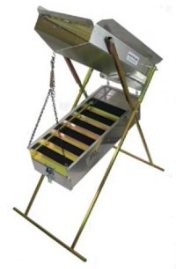
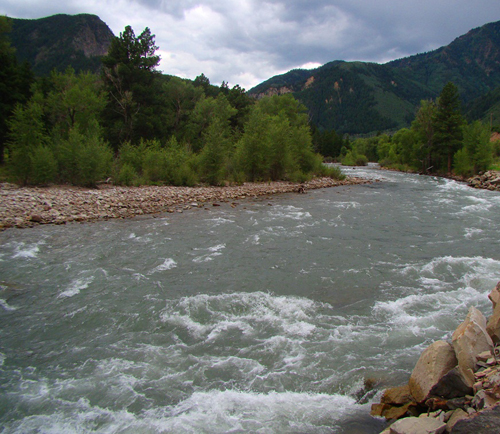
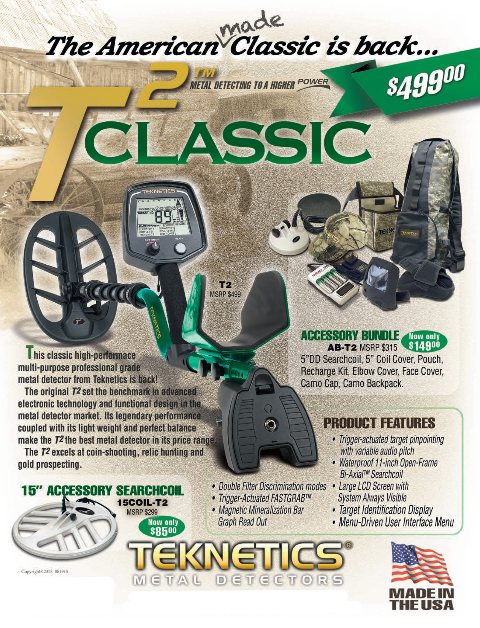
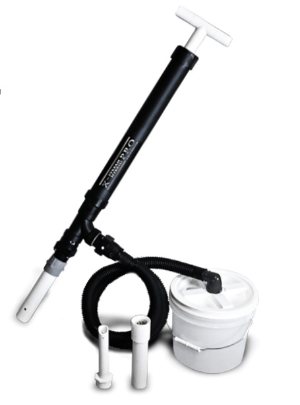 If you’re sniping underwater, float on the water with your mask and snorkel, going downstream with the current. Look for crevices below the waterline that are reachable. When you locate a likely spot, remove the loose sand that commonly fills crevices in the bedrock. “Fan” away the sand and lighter debris with your hand, then use a pry bar or other
If you’re sniping underwater, float on the water with your mask and snorkel, going downstream with the current. Look for crevices below the waterline that are reachable. When you locate a likely spot, remove the loose sand that commonly fills crevices in the bedrock. “Fan” away the sand and lighter debris with your hand, then use a pry bar or other 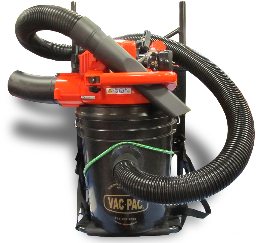 Sniping is about the little things— working smaller areas very thoroughly. Perhaps the most pleasurable thing about sniping is its simplicity. You can hike in and get away from the crowds, and enjoy some peace and quiet and lovely scenery. It is a cool way to spend a hot summer day, and if you have patience and really learn to read the stream, you will find more and more gold using this method. If you’re new to gold sniping, you also might want to search YouTube for videos showing snipers in action.
Sniping is about the little things— working smaller areas very thoroughly. Perhaps the most pleasurable thing about sniping is its simplicity. You can hike in and get away from the crowds, and enjoy some peace and quiet and lovely scenery. It is a cool way to spend a hot summer day, and if you have patience and really learn to read the stream, you will find more and more gold using this method. If you’re new to gold sniping, you also might want to search YouTube for videos showing snipers in action. 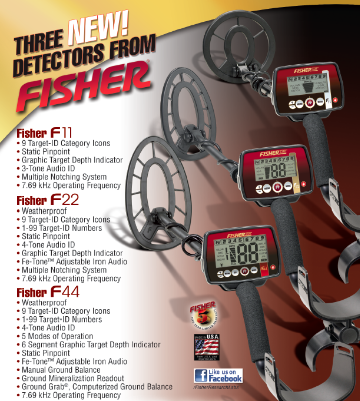
 The Fisher F44 weatherproof metal detector is backlit and environmentally sealed for use in the toughest environments. This unit comes with an 11 inch Concentric Elliptical Waterproof Searchcoil and is ideal for inclement weather hunting, beach hunting, coin shooting, jewelry hunting, and relic hunting. For only $349 you get many, many features that are usually only found on higher priced models— 9-Segment Visual Target-ID, 5 Modes of Operation, 20 Levels of Adjustable Sensitivity, 20 Levels of Adjustable Volume, 4-Tone Audio-ID and MORE!
The Fisher F44 weatherproof metal detector is backlit and environmentally sealed for use in the toughest environments. This unit comes with an 11 inch Concentric Elliptical Waterproof Searchcoil and is ideal for inclement weather hunting, beach hunting, coin shooting, jewelry hunting, and relic hunting. For only $349 you get many, many features that are usually only found on higher priced models— 9-Segment Visual Target-ID, 5 Modes of Operation, 20 Levels of Adjustable Sensitivity, 20 Levels of Adjustable Volume, 4-Tone Audio-ID and MORE! 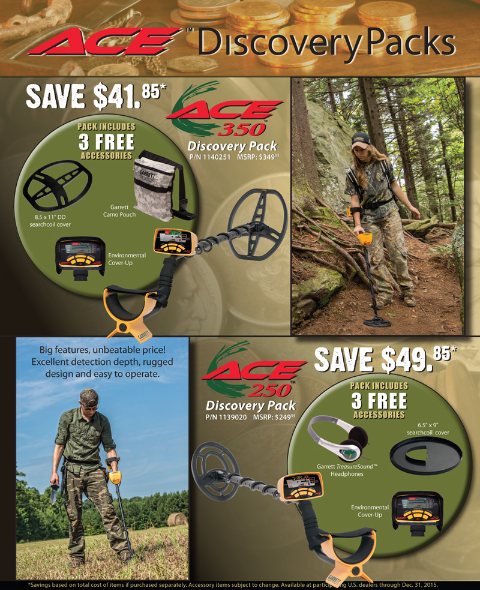
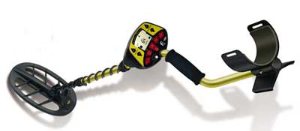
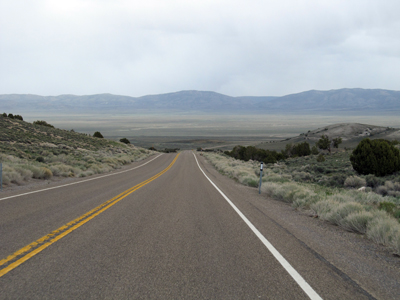 Road in America.” At the same time, AAA representatives warned travelers to avoid this empty 287-mile stretch unless they were “confident of their survival skills.” Much has changed in the last 30 years. The scenery is still wide open, there’s not a lot of traffic, but it’s far from lacking in amenities. This scenic corridor retraces the route of the Pony Express and Overland Stagecoach trails, connects you to plenty of recreational opportunities, and passes through five full-service communities. Eureka is one such stop along the route, and is one of the best-preserved 19th century mining towns in the state.
Road in America.” At the same time, AAA representatives warned travelers to avoid this empty 287-mile stretch unless they were “confident of their survival skills.” Much has changed in the last 30 years. The scenery is still wide open, there’s not a lot of traffic, but it’s far from lacking in amenities. This scenic corridor retraces the route of the Pony Express and Overland Stagecoach trails, connects you to plenty of recreational opportunities, and passes through five full-service communities. Eureka is one such stop along the route, and is one of the best-preserved 19th century mining towns in the state. 